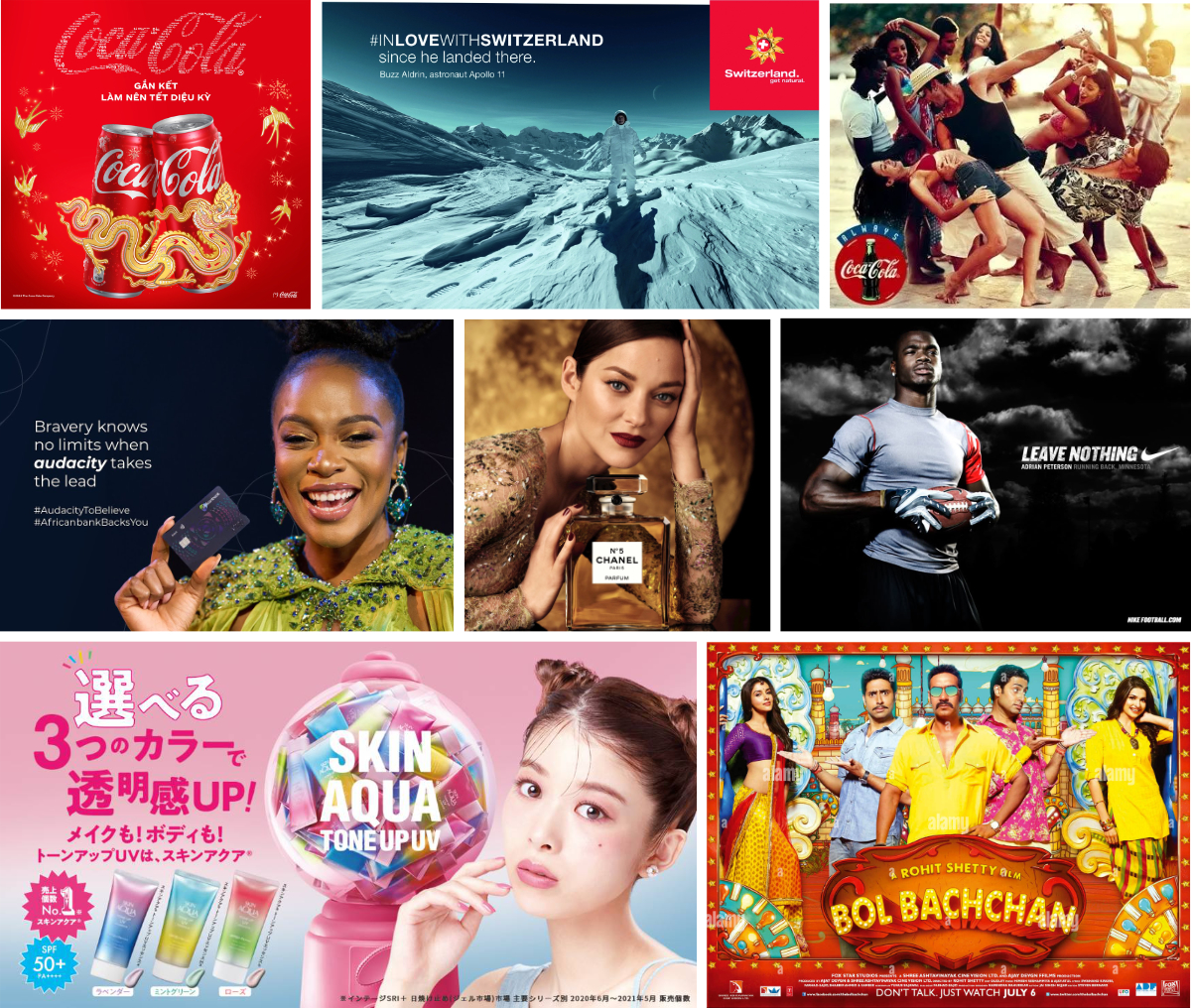MULTICULTURAL DESIGN ADAPTATION
Worth a thousand words…
When designing for global or multicultural audiences, it is essential to understand the cultural significance of certain design elements, to avoid misunderstanding or unintentional offense. Always be mindful of local customs, historical associations and cultural taboos, as visual interpretation can change depending on the region, culture and context.
At Branded Translation we assess your campaign creative against the norms, values and associations of your multicultural audience. If adaptation is deemed necessary, we can optimize the creative for you, finding the perfect blend between brand consistency and culturally appropriate design.
If you are looking to localize campaign creative, or you just want to assess whether localization would be beneficial, please reach out. We would be happy to take a look and discuss your options.
Examples of localized design in advertising:

Images
Images that align with the cultural context create a sense of authenticity and understanding, which can foster trust and loyalty, leading to a stronger and relatable connection to the brand. Failing to do so can result in miscommunication and alienation of the target audience.
By thoughtfully selecting culturally appropriate images advertisers can ensure their message is inclusive, respectful and effective, ultimately driving better engagement and results.
Style
Good advertising design reflects local cultural values and aesthetics. The style may differ greatly depending on region.
For example, Swiss and Scandinavian designs emphasize minimalism and functionality, while French and Italian designs focus on elegance and sophistication. Eastern European styles often feature bold, conceptual elements, and North American advertising leans on dynamic, trend-driven visuals. Latin America and Africa bring vibrancy, cultural motifs, and storytelling to their designs, while Asia balances tradition with modernity.
While these examples are a broad generalization, it is important to understand that there are many distinctions and nuances in advertising design that can have a big impact on how well your brand is received, recalled and acted on.

Colors
Colors can have a deeper and/or different meaning in other cultures. In China and East Asia, for example, the color red is generally considered an important symbol of prosperity, happiness, and celebration.
On the contrary, in South Africa, red is associated with mourning and can be seen as inappropriate for celebratory events (much like the color white across most Asian cultures).
Needless to say, color usage is an important aspect in multicultural design.
Symbols
While most symbols are universally accepted and understood, there are a few exceptions. And when the meaning of a symbol is different in a particular culture, it is usually a significant one.
For example, in many Middle Eastern countries, the thumbs-up gesture is considered offensive and is used as an insult. When designing for Middle Eastern audiences, consider alternative symbols instead, such as a smiling face or check mark.
The same holds true for the Swastika, a symbol that in Western cultures is associated with Nazi regime. Yet, in Hinduism and Buddhism, it is a symbol of good luck, prosperity and spirituality.
Numbers & Format
Like colors and symbols, some numbers can have specific associations in certain cultures. For example, the number 4 is often considered unlucky in East Asian cultures because its pronunciation is similar to the word for “Death” (“chi” in Chinese and Japanese). This believe is similar to the Western fear of the number 13.
Formats have a more practical concern. One of the most common distinctions is paper size… A4 is the international standard in Europe, Asia, Africa and most of the world, whereas ‘letter size’ is predominantly used in North America. When designing collateral for a global audience, A4 is generally the safer choice.
Related articles:
Borderless Branding: The Importance of Cultural Awareness in Global Advertising
A frequently overlooked aspect in localization is culture and its influence on consumer preference and behavior. In this article we will break down key cultural differences and demonstrate how you can adapt your message. Whether you’re localizing a campaign or refining your global brand strategy, these insights will help you create content that feels authentic and relevant to your audience.
Exploring Cultural Nuances in Advertising Design
Design styles are often unique to certain regions of the world. Understanding these cultural design differences (and finding the right balance with your brand) can have a big impact on how well your advertising creative is received, recalled and acted on.
Can’t Read, Won’t Buy
Summary of a Common Sense Advisory landmark study, highlighting the critical importance of localizing marketing content to align with consumers’ linguistic and cultural preferences. This article highlights key data points, suggesting that localized advertising generates much higher engagement and purchase intent than ads that are not localized.
